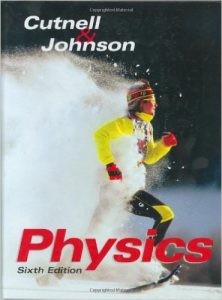High School Physics History
High School physics was the only high school physics course taught for a long time, several decades. When I was in high school, and I am pretty sure that when my dad was in high school, too, if you wanted to take physics, this was the course that was taught. My beloved dad, very recently departed, was a structural engineer, and it was from him that I gained my love of math and physics. There was one, and only one, high school physics class.
[yikes-mailchimp form=”1″ submit=”Please tell me more!!”]
High School Physics as part of STEM Education Curriculum
This high school physics course was typically taught only to high school seniors, because of the math required. High school physics required trigonometry, which was usually only learned as a junior, or within pre-calculus, also usually taken as a junior. So the pre-requisities for high school physics necessitated that it only be offered to seniors. High school physics was also commonly taken concurrently with calculus, to make a complete college prep curriculum, especially for those pursuing STEM Education careers (Science, Technology, Engineering and Math).
High School Physics is more rigorous than the Freshman Physics course discussed here: Freshman, or High School Physics Courses, in part because high school physics requires trigonometry. The freshman physics version does not require trigonometry. Also, because a high school junior or senior will usually have a higher level of mathematical maturity than a high school freshman, problems requiring greater mathematical rigor and more application of concepts can be used than what is appropriate for a freshman.
AP Physics vs. High School Physics
Because of the very high value of AP Physics courses, many high schools are eliminating the standard high school physics classes in favor of AP Physics. While I recognize the extra effort, work, and test involved in taking AP Physics, honestly, if you’re going to slog through a trigonometry-based high school physics course, you might as well go all in and get some college credit for it. If you’re attending a public high school, especially in California, there is no tuition for any of your classes. The AP Physics test costs $100 or so, and you may have to engage an AP Physics tutor or do some test prep in order to earn the 4 or 5 required to earn the college credit for the class. Let’s say you spend $1000 total on AP Physics test and exam prep. Yes, this isn’t pocket change. Compare this to the cost of tuition at many universities, PLUS the added benefit of having fewer college classes to take, possibly enabling an earlier college graduation and earning a paycheck sooner. Isn’t that awesome? There is a very high Return on Investment with taking AP Physics. So, if you have the chance to take AP Physics, I strongly advise it. You will save yourself in the long run. Unfortunately, many smaller high schools or schools in economically depressed areas lack the student enrollment to keep AP Physics in their curriculum, so the only option is to take the standard high school physics class, which provides no college credit opportunity.
High School Physics Tutoring Experience
High School physics has been another mainstay of my tutoring business, with at least another hundred or so hours tutored in this subject. As mentioned above, because of the low availability of AP Physics courses in small and economically disadvantaged high schools, students seeking a college prep curriculum only have this option for high school physics.
I own several high school physics textbooks, including the Cutnell and Johnson 6th edition physics textbook, pictured here: 
More importantly, I own the full Instructor’s Solutions Manual for this high school physics textbook. Believe me when I say you can learn more from the solutions manual than you can from the textbook, sometimes. See my thoughts on physics textbooks editions here: